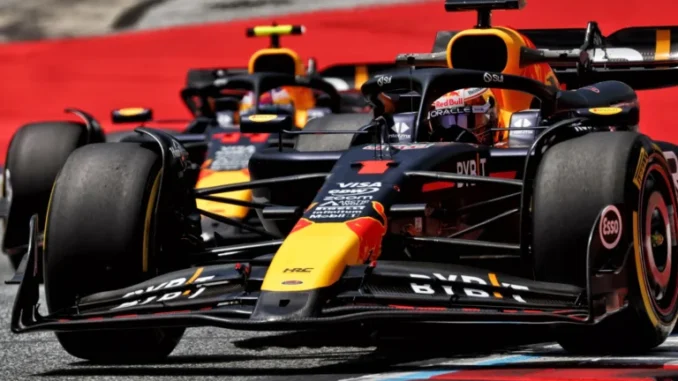
Fizzle Out
Core:
Commitment to 2025 Championship
Red Bull’s technical director, Pierre Wache, emphasized the team’s dedication to the 2025 season, stating that they will not “throw away” their title pursuit in favor of focusing solely on 2026. This approach underscores Red Bull’s intent to maintain their competitive edge and continue their winning momentum.
Max Verstappen, the team’s lead driver, echoed this sentiment, highlighting the importance of the 2025 season. He noted that while the 2026 regulations remain somewhat unclear, the team is concentrating on developing the RB21 for 2025 to ensure they remain at the forefront of the competition
Navigating the 2026 Regulatory Changes
The 2026 season will introduce comprehensive changes to both power units and chassis designs, marking one of the most significant shifts in Formula 1’s recent history. These changes aim to make cars more agile and sustainable, with a focus on zero-emission fuels and increased electrical power.
Red Bull’s team principal, Christian Horner, described the upcoming 2026 regulations as the “biggest reset in probably the last 60 years of F1.” Despite the magnitude of these changes, Horner emphasized that the team would not divert all resources away from their 2025 campaign, aiming to balance immediate performance with future development.
Strategic Resource Allocation
Balancing the demands of the present and future requires meticulous planning. Red Bull is likely to allocate a portion of its resources to the development of the 2026 car while ensuring that the 2025 challenger remains competitive. This dual-focus strategy aims to prevent any compromise in their current performance while laying a strong foundation for the forthcoming regulatory era.
Power Unit Developments and Partnerships
A significant aspect of the 2026 regulations involves changes to power unit specifications. Red Bull has proactively addressed this by establishing Red Bull Powertrains and entering into a partnership with Ford. This collaboration is set to provide expertise in areas such as battery cell technology and power unit control software, ensuring that Red Bull remains competitive under the new regulations.
The decision to partner with Ford came after Honda, Red Bull’s current power unit supplier, announced its intention to supply Aston Martin from 2026 onwards. Honda’s decision was influenced by Red Bull’s move to develop its own power units, making continued collaboration unfeasible.
Historical Context and Lessons Learned
Historically, teams that have balanced current performance with future development have reaped significant rewards. For instance, in 2008, while McLaren and Ferrari were engrossed in a tight championship battle, teams like Brawn GP and Red Bull capitalized on the upcoming regulatory changes, leading to improved performances in subsequent seasons.
Red Bull aims to emulate this approach by ensuring that their 2025 campaign remains robust while strategically investing in the development of their 2026 car. This strategy is designed to maintain their competitive edge across both seasons.
Conclusion
Red Bull Racing’s strategy reflects a commitment to immediate success without compromising future competitiveness. By balancing resources and focusing on both the 2025 championship and the impending 2026 regulations, Red Bull aims to sustain its position as a leading force in Formula 1. This approach not only demonstrates their confidence in current capabilities but also highlights a forward-thinking mindset essential for navigating the evolving landscape of Formula 1.
Leave a Reply